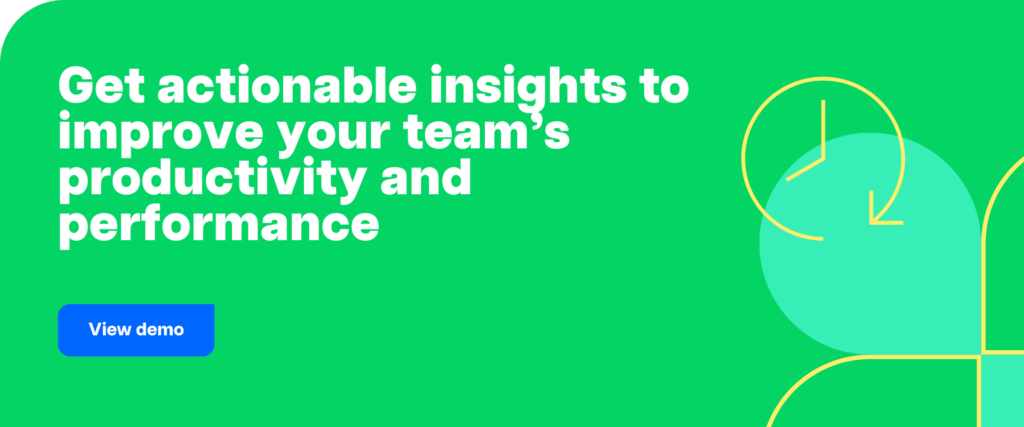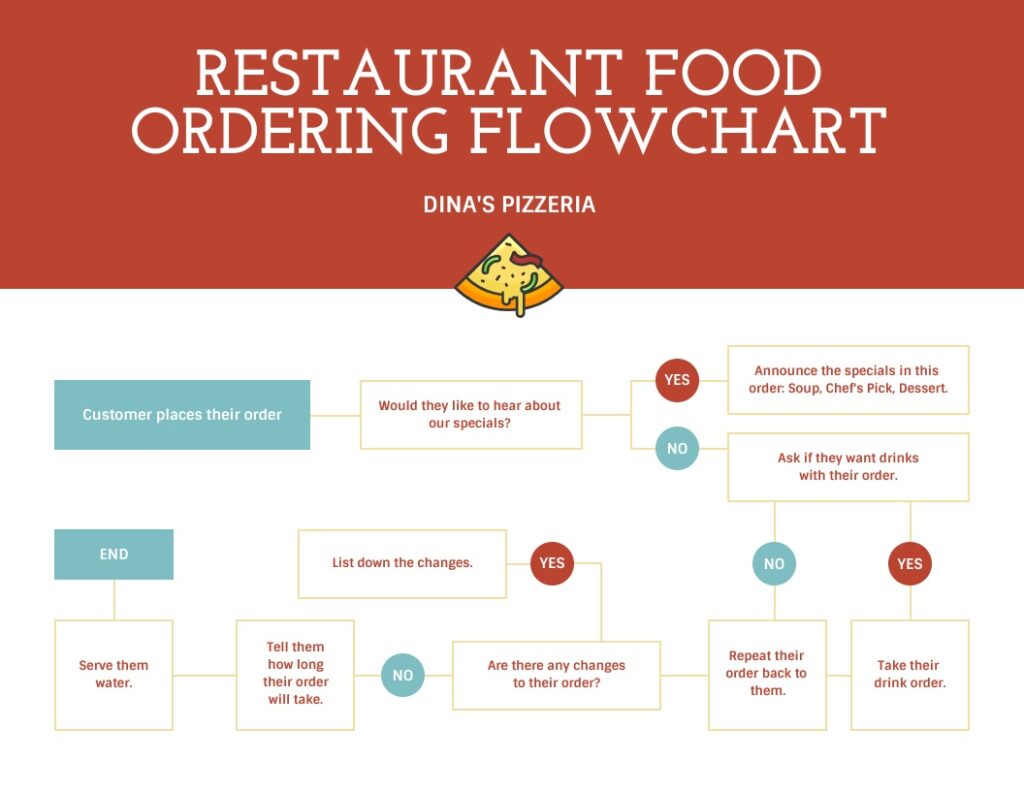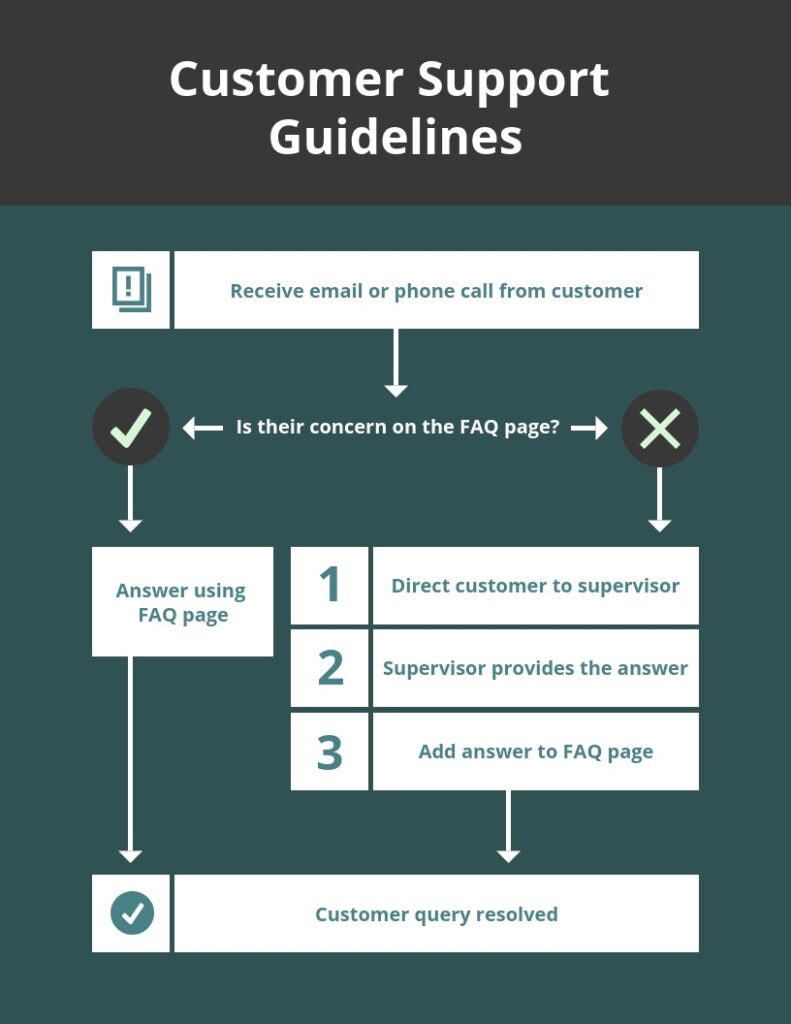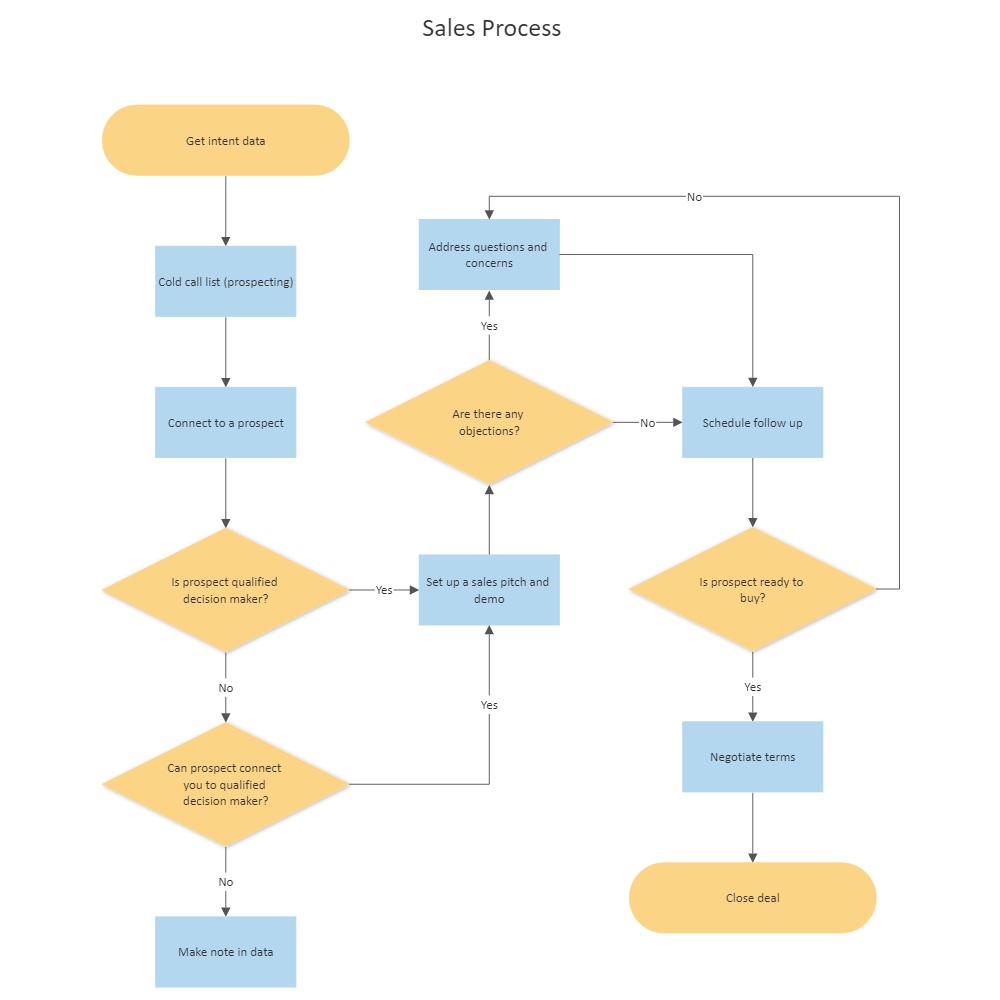A flow chart call center process is becoming increasingly necessary for call centers that want to be more efficient.
For starters, it helps call centers visualize their entire workflow to identify and fix any inefficiencies. Additionally, using a process flow chart can reduce call mismanagement by establishing accountability and boosting agent productivity.
In this article, we’ll explore what a call center process flow chart is and its five types.
We’ll then highlight three sample flowchart templates you can use and the five key benefits of using a flowchart call center process.

Table of Contents
- What is a call center process flow chart?
- 5 common types of call center process flow charts
- 3 handy flow chart call center process templates
- 5 key benefits of using a flowchart for call center processes
Let’s get started.
Note: If you’re only looking for call center flow chart templates, feel free to skip ahead for some handy templates.
What is a call center process flow chart?
A call center process flow chart is a diagram or a graphical representation of any customer service process.
In this diagram, a flowchart symbol or an icon represents each different step in a specific process. A flowchart symbol may also contain a text box that describes the step.
You can link a flowchart icon to another with arrows that show the chronological order of the call center process.
Such a workflow diagram will usually highlight key tasks that call center agents need to do, including customer support, customer complaint resolution, technical support, payment process management, etc.
Considering the high volume of calls, agents benefit from a standardized work process map that tells them what to do. Additionally, mapping out your call center workflow in a flow chart can significantly reduce errors and boost team flexibility.
And some commonly-used flow chart formats include:
- State diagram: Uses Unified Modeling Language (UML) for diagramming the behavior of call center systems.
- Swimlane flowchart: An infographic depicting who does what in a process.
- Data flow diagram: Shows the direction of information flow in a process.
- Mind map: Links key concepts using images and lines.
- Org chart: Shows the internal structure of a company.
- Network diagrams: Graphical representation of a computer or telecommunications network.
How to create a call center process flowchart
Without the right tools, creating a flowchart can be a challenging task.
Fortunately, you can use flowchart software to create a call center process diagram with ease. Most flowchart software has a drawing page with tools to help you create different flowchart formats.
The best flowchart makers support features such as:
- A variety of shapes.
- Ready-to-use templates.
- Tools such as grids and auto-snapping shapes.
- A variety of export options.
Some popular flowchart makers are Visio, Microsoft Powerpoint (PPT), Creately, and ConceptDraw flowchart maker.
Now, let’s look at the five types of call center flow charts that can boost your team’s efficiency.
5 common types of call center process flow charts
Here are five great customer service workflows you can easily implement to deliver a better customer experience:
1. Inbound customer service flowchart
As the name suggests, this flowchart is a diagram that traces how the customer service process works during incoming calls.
Here, your team deals with a customer that has chosen to reach out to you. This means the customer has clear expectations from your customer service team.
An inbound call center process flow diagram will empower your call center agents to conduct tightly orchestrated interactions with your customer.
The basic skeleton of an inbound process flow chart can look like this:
- A customer sends a request to your call center BPO (Business Process Outsourcing).
- A call center agent greets your customer with a pre-decided call script.
- The agent notes the reason for the inbound customer call.
- The call center agent then determines a route to achieve customer satisfaction.
You can customize this basic flowchart to suit your unique business process. Additionally, you can transform your flowchart into a more detailed process map by adding a customer call script, details on customer wait times and average handling time, and more.
2. Outbound customer service flowchart
Unlike a flow chart for an inbound call center process, this diagram visualizes how outbound call centers offer customer service during an outgoing customer call.
Here, your team speaks to prospective customers for sales, lead generation, telemarketing, fundraising, debt collection, etc.
Usually, these calls can be overwhelming for agents as cold calling can often feel intrusive for the customer.
In such cases, you should have an outbound process flow diagram that’ll help agents provide the best customer service possible. This workflow diagram should also standardize how agents should approach a customer.
For example, let’s say that you own a software company.
Here’s a flowchart example of what your outbound process flow chart could look like:
- Call center agents “cold call” customers to make a sale.
- The agents greet them with a structured call script.
- Agents convince customers to make a purchase.
- They seek useful information from customers.
- If the customer is convinced, agents may book a follow-up meeting or call to go forward with the purchase.
- If they’re unconvinced, agents politely end the interaction.
3. Customer complaint resolution process flowchart
A customer complaint resolution flowchart outlines each step a call center or a contact center takes to solve a customer complaint successfully.
This flow chart diagram will help agents handle customer frustrations and maintain the company’s reputation.
After all, your call center agents are extensions of your business. And any error on their part may lead your customer to think your company is incompetent or indifferent to customer needs.
Process mapping (the process of creating flowcharts) can help your agents understand how to address each unique customer concern.
For example, a customer issue resolution workflow chart could look like this:
- A customer calls to report an issue
- A call center generates a support ticket
- They assign severity level or priority level to the issue
- An expert then talks to the customer to resolve the issue
4. Technical issue resolution process flow chart
Technical support is quite different from customer service.
A technical issue resolution flow chart outlines every step a company should take to resolve a customer’s software or hardware issue — for example, a faulty headset.
Note that some technical issues may not come from customers but from the company itself. A technical issue resolution process flow diagram can account for such a scenario as well.
A basic technical issue resolution workflow chart may look like this:
- The business or a customer detects an issue.
- An agent opens a technical support ticket.
- Developers receive the ticket for verification.
- In a scenario where the customer has made an error, the support ticket is classified as unverified and is closed immediately.
- If the ticket is verified, the technical staff takes over to resolve the issue.
5. Customer billing and orders process flow chart
Handling customer finances can be a complex process.
Fortunately, a customer billing and order flowchart can help break down a call center team’s actions to assist customers with payment and delivery issues.
For instance, if a customer doesn’t receive an order confirmation or get an order delivered on time, they may feel frustrated. A situation like this can overshadow the positive aspects of your business process.
Structuring and visualizing a proper billing and order flowchart can ensure your call center team doesn’t overlook any customer concerns.
A sample billing and order process flow chart could look like this:
- Customer orders a product or a service.
- They receive a confirmation email and receipt.
- The accounting team gets the order information.
- This activates the shipment process.
- The Customer receives the product.
- The order is closed.
Agents also routinely use voicemails, Interactive Voice Response (IVR) systems, and the ‘Do Not Call Registry’ (a list of customers your agents shouldn’t call). Your basic flowchart should also include breakdowns on how to use these resources.
You can also make your flow chart more detailed by including the targets you want your call center agents to achieve. Your chart can have targets in the form of metrics, including conversion rate, number of calls per agent, etc.
3 handy flow chart call center process templates
Now that we’ve looked at how a flow chart can illustrate any customer service process, let’s look at three call center flowchart templates you can use today.
1. Customer order process flowchart

The above template breaks down the steps involved in helping a customer place an order with a restaurant.
A customer makes numerous decisions in an ordering process, from choosing what to order to how they’ll pay for their purchase.
That’s why this template sample includes a decision point — a stage where a customer can make a “yes” or a “no” decision. You can use this template and customize it to cater to your business process.
Download this flowchart template.
2. Customer complaint resolution process flow chart

This customer issue resolution template considers the complex process of helping customers deal with different kinds of challenges. It creates two distinct pathways for customer issue resolution based on the nature of the customer complaint.
The template also encourages agents to use the company’s FAQ page. You can include similar customized guidelines in your flowchart.
Download this flowchart template.
3. Sales call center process flowchart

This flowchart example fleshes each different step involved in a sales call center process. This process flowchart can help in mapping out what areas you need to focus on to optimize your sales funnel.
Since cold-calling can make a customer feel cornered, they may choose not to interact with your agent at all. That’s why this template highlights every decision point (in a “yes” or “no” format) that a customer makes to change the course of the sales process.
You can customize the template to address the pain points in your business process.
Download this flowchart template.
5 key benefits of using a flowchart for call center processes
Let’s take a closer look at how using a flowchart for a call center process can be beneficial:

1. Document processes for improvement
A process flowchart is a tool that can help you document key details about each project your call center team works on.
A flowchart documents details such as:
- How your team carries out a process
- Who is responsible for the process
- A list of changes made to the process flowchart
These details can then form the basis of your future workflow flow charts, saving you a lot of time and resources.
2. Reduce processing time
A visual flowchart can help identify repetitive tasks that you can automate, helping you reduce process times.
Additionally, a process flowchart can help in mapping out and addressing the bottlenecks in your workflow.
For example, let’s say your workflow flowchart shows that your call center agents are struggling with high-volume calls. You can then use a helpdesk ticketing automation tool to help collect, organize, and track a customer’s request from various channels in one place.
Your agents can then focus on improving customer experience instead of doing administrative tasks like answering and documenting calls.
3. Delegate tasks efficiently
Working with large call center teams can complicate your workflow process and make task delegation a complex process. Additionally, it can be difficult to see the workload a particular team is handling.
However, having a visual workflow chart can give managers and decision-makers a clearer overview of the business process, making it easier to delegate tasks efficiently.
4. Establish accountability
When it comes to work efficiency in a call center, work delegation is just one challenge. The other crucial challenge is establishing accountability amongst call center agents.
A call center process flowchart can include details about the individuals or teams responsible for certain tasks. In doing so, there’ll be clearer communication between teams, and team members can take responsibility for their tasks.
5. Escalate issues faster
Each new inbound call from a customer is unique. While your team can resolve some calls in just one interaction, other calls may need further escalation to different teams.
Now, how quickly a serious issue is escalated depends largely on the judgment of your call center agent. A process mapping flowchart can help you identify tough situations and train agents to respond efficiently.
Want to manage your call center operations better?
Wrapping up
A properly visualized and detailed flowchart can help significantly boost agent productivity and customer satisfaction.
Additionally, it can be a standardized guide to help your call agents understand what to do, even in tricky and high-pressure situations.
Use the information we covered here to understand how to create your call center process flowchart.
You can also get started by trying out one of the templates we’ve mentioned, customizing it to suit your business requirements.

Andy is a technology & marketing leader who has delivered award-winning and world-first experiences.


